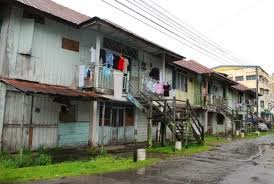Who are “the poor” in Malaysia?
Rest Stop Thoughts
We live in an age which excels in broadcasting slogans and catchy phrases. Often we, the hearers, unconsciously ‘choose’ the meaning. A good example is “People first.” What does it mean? Who are “the people”?
All of us fear being poor. That’s why we worry about increases in the price of electricity, fuel, assessments and hikes in tolls. We recognize there will always be rich and poor. We hope the poor won’t suffer too much. We hope they will grasp opportunities and lift themselves up. We “do charity” now and then, and shed tears of joy whenever we hear of someone doing good for the poor.
Eventually we end up with a list of poverty indicators which are not much different from what we find in academic discussions of poverty: “vulnerability to risks, powerlessness, lack of personal freedom, social exclusion, etc.”
Yet those who work for government, e.g. in the Social Welfare Department, in the Housing Department and in the Economic Planning Unit (EPU), have to work with definitions.
They need clear definitions in order to make decisions.
So, according to officialdom, who are the poor?
I’ll start with official data from the statistics department, published by the EPU.
Malaysia began measuring the incidence of poverty in 1970. In 1977, we introduced the PLI approach: any household which earns equal to or less than the PLI – and the PLI varies according to where the household is located – is classified as poor.
The PLI is based on “household” income.
In 2005, when the current definition was finalized, the “reference household” was made up of 1 male and 1 female aged 18-29, 2 boys aged 3 and 9 and a girl aged 5.


